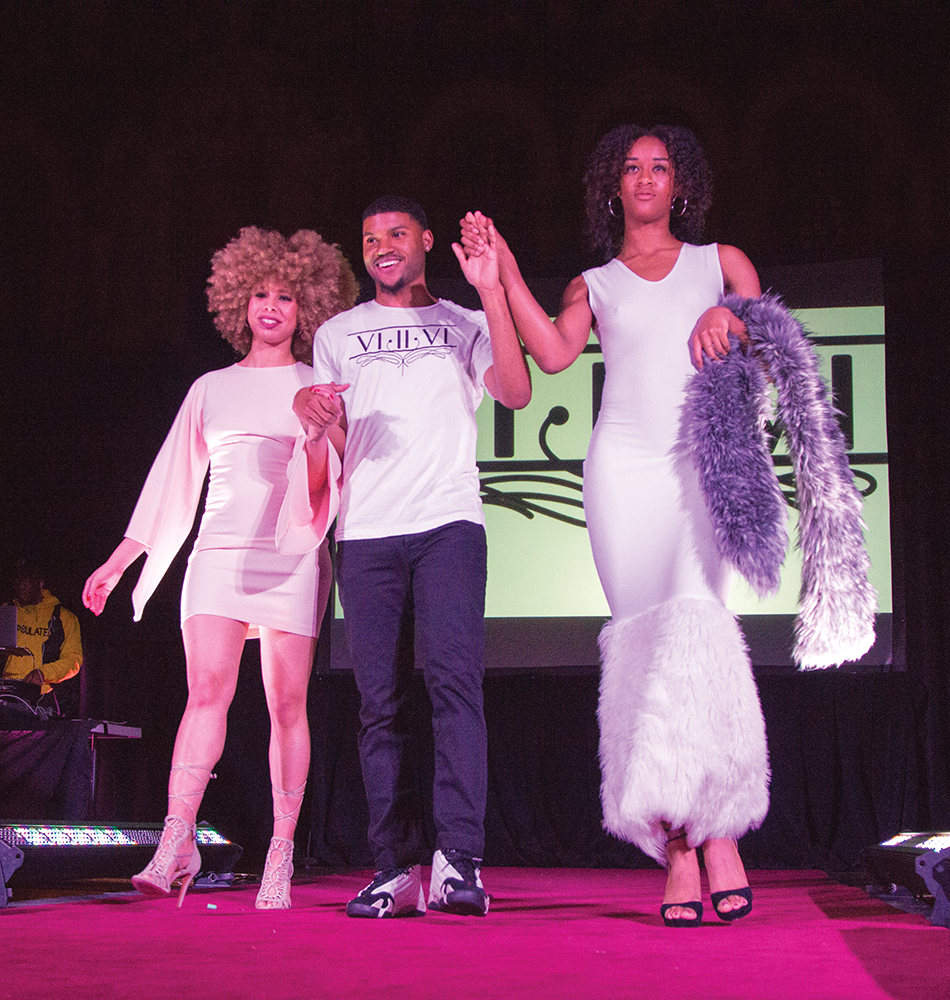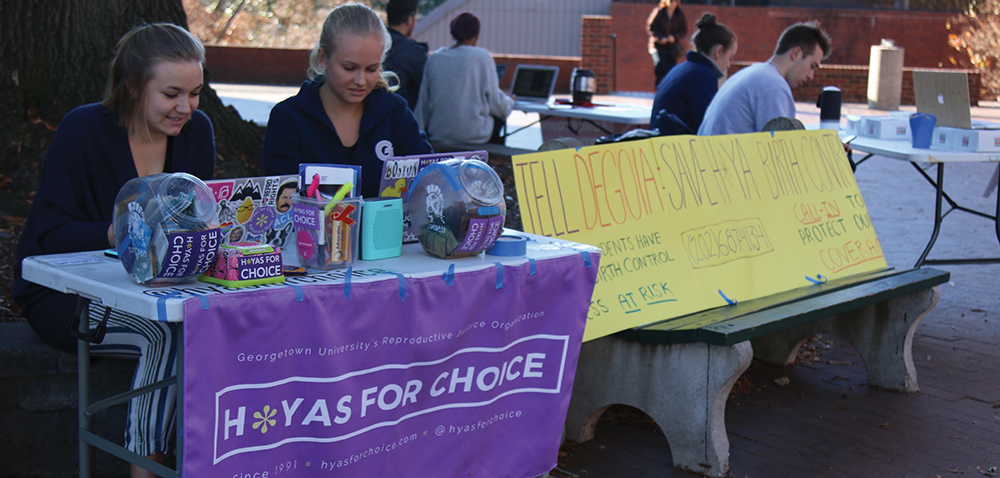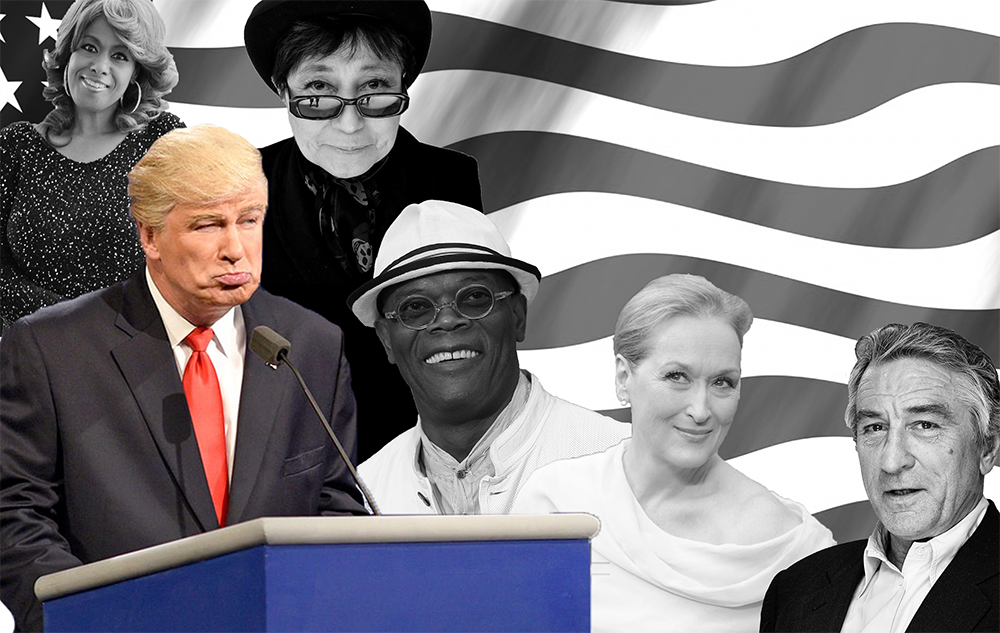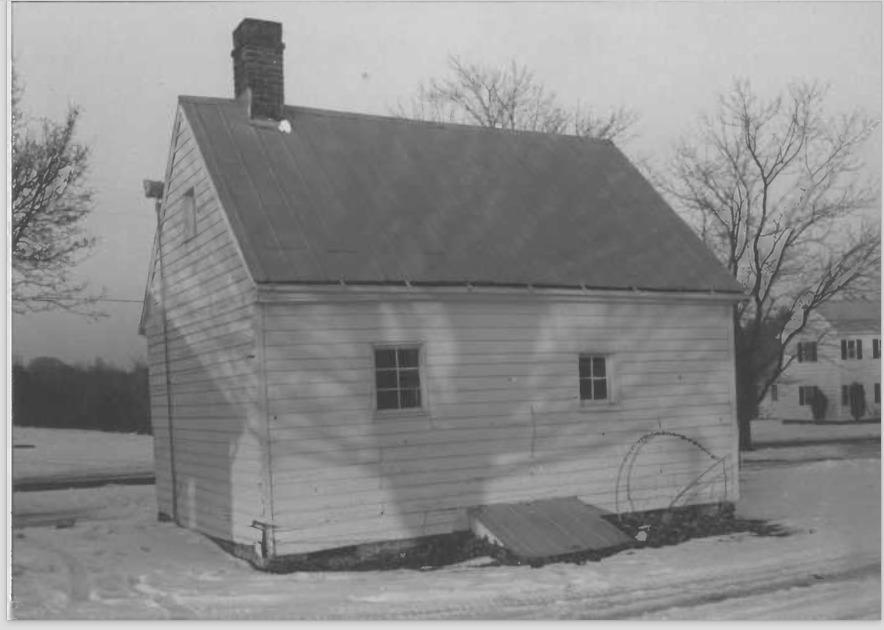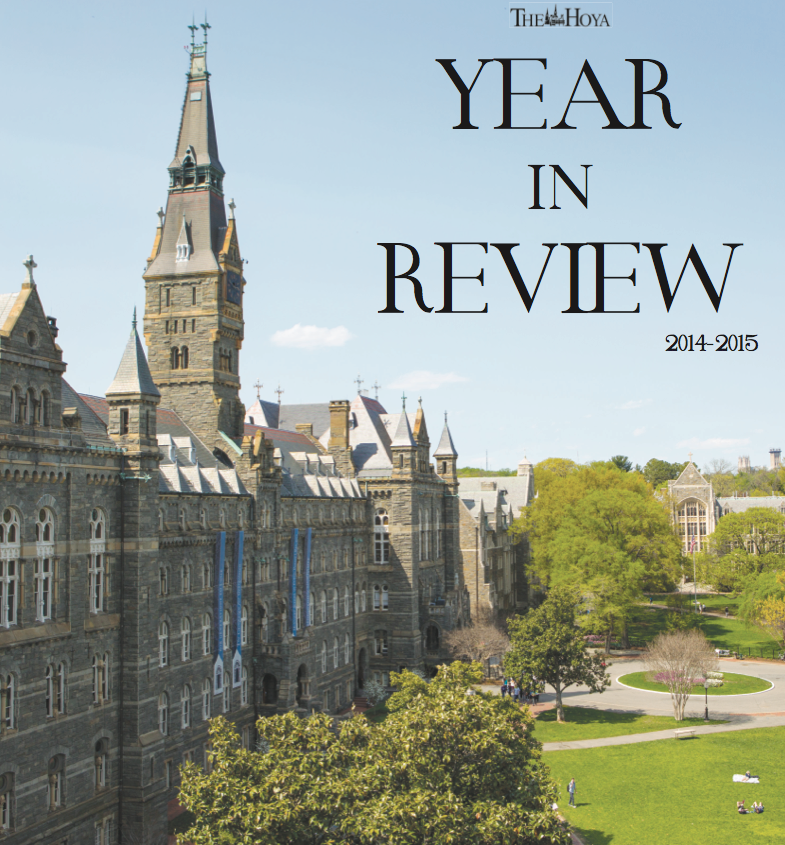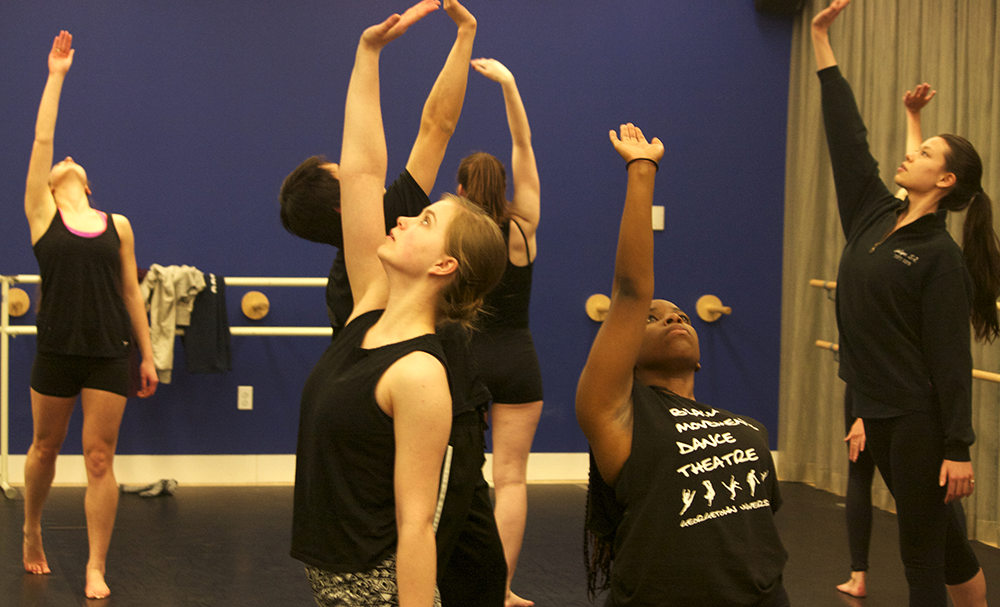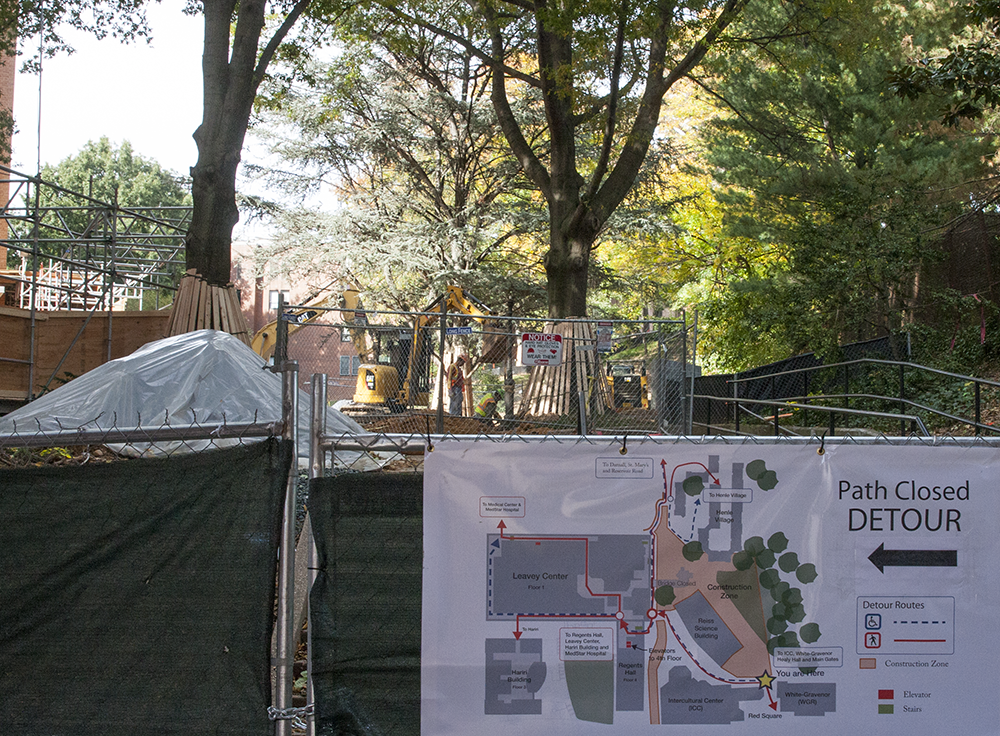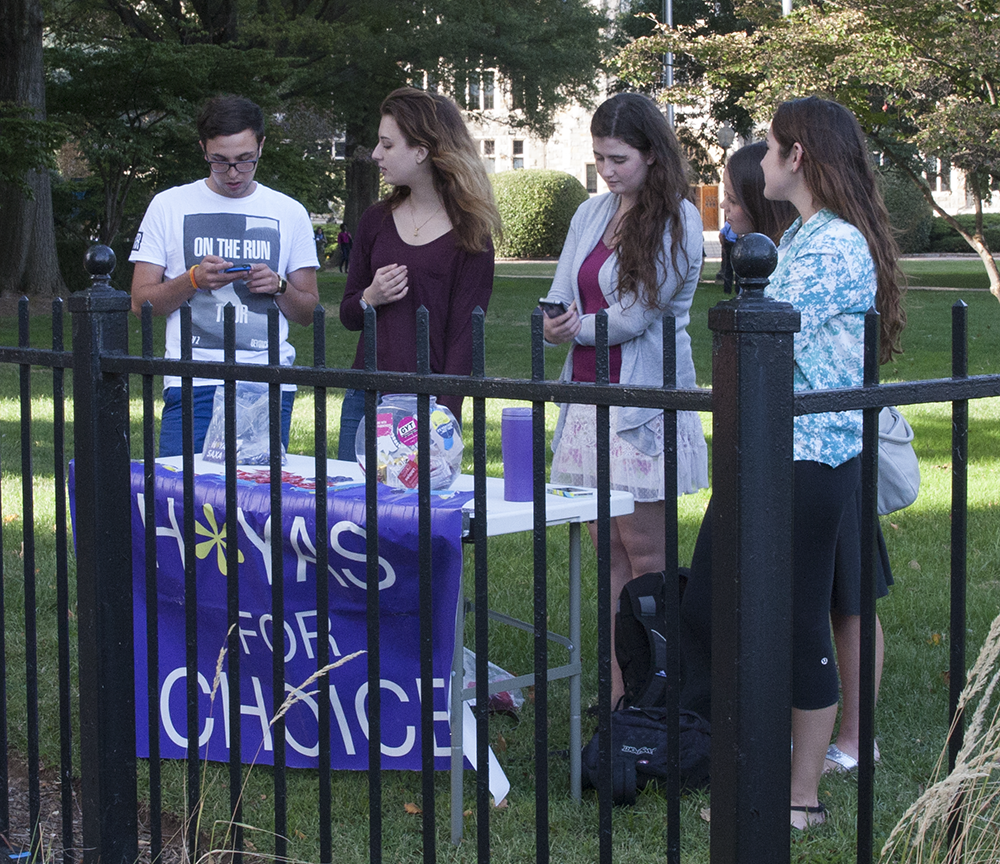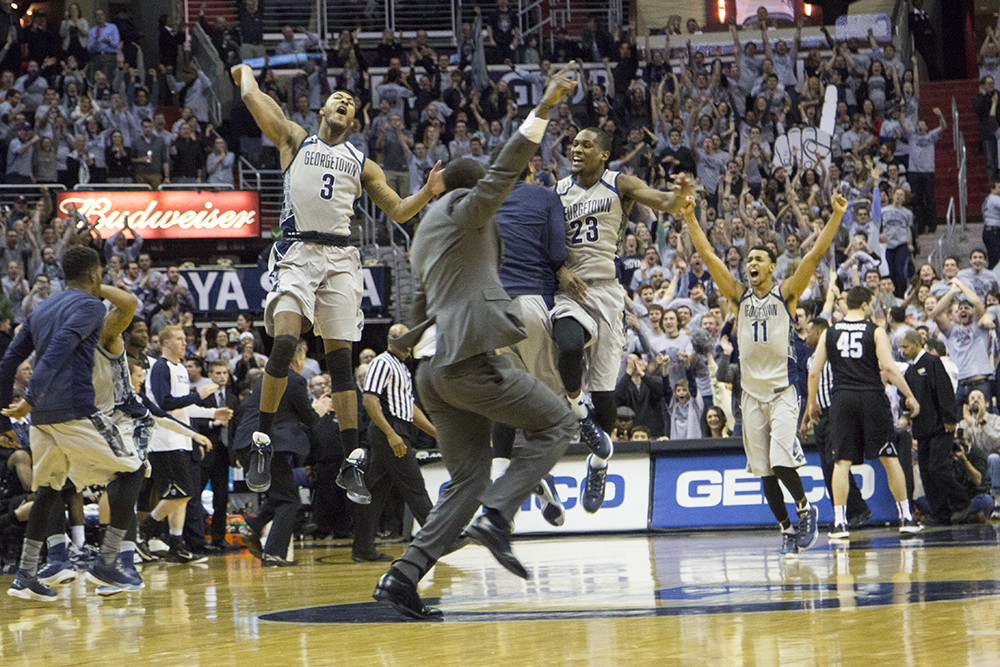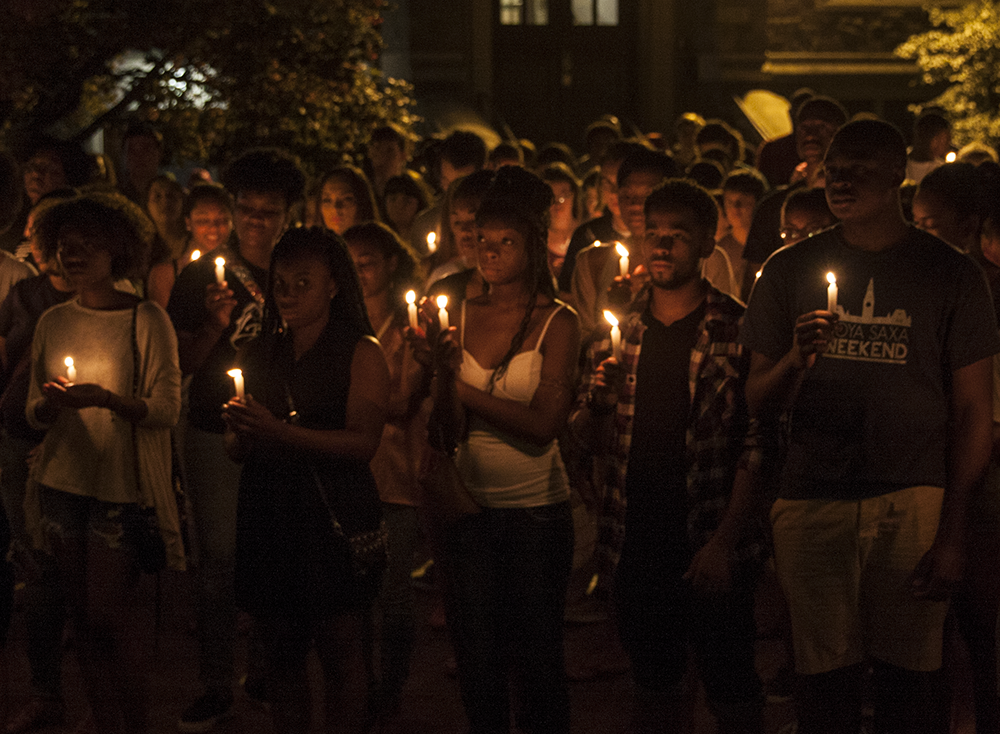
Students gathered for a vigil on the events in Ferguson in Red Square in August.
On the eve of the first day of classes in August, a collection of members of the Georgetown University community found their way to Red Square. Two weeks earlier, Michael Brown, an 18-year-old black male, had been shot by a police officer in Ferguson, Mo., triggering nationwide protests decrying police brutality against communities of color.
Now, it was time for Georgetown to participate in the national conversation. Student speakers opened the vigil with their personal reflections on the events in Ferguson before giving way to professors and, eventually, University President John J. DeGioia. At the end of the event, candles rose into the air, illuminating the red brick of the square.
“It was one of those beautiful moments that highlighted the solidarity achieved on Georgetown’s campus,” GU National Association for the Advacement of Colored People President Mikaela Ferrill (COL ’15) said.
These national and campus events set the tone for the rest of the academic year. Over the past eight months, conversations about race and diversity became ingrained into the national consciousness. Striking images of armed police fighting back protesters in Ferguson, of Eric Garner falling to the ground in Staten Island as a police officer held him in a stranglehold and of protesters raising their fists in front of the White House captivated the nation.
These same conversations also played a major role in student life on campus, as the university community reflected on the state of race relations and diversity both nationally and at Georgetown. While university stakeholders, including faculty and administrators, were pulled into the discussion, students were the driving force behind the various movements, beginning difficult conversations about university shortcomings and proposing institutional solutions to create a more thoughtful, socially conscious and unified Georgetown.
***
Two days after the vigil in Red Square, the Office of the President organized a panel of faculty members from both the main campus and the law center to reflect on the incidents in Ferguson. The event, held in Gaston Hall, marked the increasing support from the administration in providing space for conversations on race.
“Because the events took place at the beginning of the year, we had more time to be immediately reactive, and so our reaction was on two levels,” Vice President for Mission and Ministry Fr. Kevin O’Brien, S.J., said. “One was the more informal, student-driven responses: the demonstrations, the teach-ins, the prayer vigils. The other was more formal in which the administration had a role in developing.”
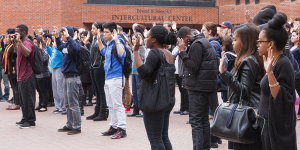
A demonstration in Red Square in November marked four minutes of silence to remember Michael Brown after the decision of the Ferguson grand jury.
Conversations on campus in the fall, particularly in the immediate aftermath of the shooting and protests in Ferguson, revolved around systemic issues with the criminal justice system, mirroring the national discussion. Law professor and former federal prosecutor Paul Butler, who spoke at the reflection event in August and at similar events at the law center throughout the year, said that the frustration stemmed from a feeling of powerlessness in communities of color.
“These high-profile cases of police officers shooting unarmed people of color have exposed a huge problem in our criminal justice system, which is that people of color are often treated differently and unfairly by police officers and prosecutors,” Butler said. “If a substantial number of our citizens don’t feel like the government is working for them, or worse yet, feels like the government is out to get them, that raises important questions about our democracy.”
Students and faculty discussed the national issues in September at a teach-in on Ferguson co-sponsored by the Center for Social Justice and the Black Leadership Forum, and 17 students travelled to Ferguson over Columbus Day weekend to personally experience the situation on the ground and participate in teach-ins and protests there.
“Once in St. Louis and then Ferguson, you really could see the impact not only of Michael Brown’s incident but the frustrations of the community. And beyond frustration into action,” LaDarius Torrey (COL ’17), who went on the Ferguson October trip, said. “Just seeing that action, just seeing it go beyond thought, was very valuable.”
Torrey also co-produced a video, “Am I Next?” in September that featured a spoken-word poem and images of black male Georgetown students.
“That genuine question of ‘Am I next?’ seemed like the right thing to ask,” Torrey said. “It’s getting people to challenge themselves and challenge others. It’s getting people to engage in those uncomfortable conversations.”
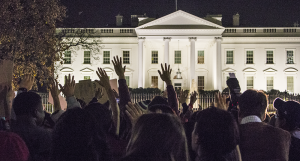
People from across the District marched to the White House after the Ferguson grand jury decision in November.
The conversations were kicked into a higher gear by the November and December decisions of grand juries not to indict the police officers involved in the cases of both Brown and Garner. In Washington, D.C., protesters, including Georgetown students, marched through Mount Vernon Square and Chinatown and to the White House to express their discontent.
On campus, students staged silent protests in Red Square, organized a week of action in December and wrote letters supporting body cameras to congressmen. In a nationally televised home game at the Verizon Center against the University of Kansas, the Georgetown men’s basketball team became the first college team to wear shirts reading “I Can’t Breathe,” Garner’s final words. And, according to BLF member Esther Owolabi (COL ’15), a more varied array of students inspired by the national events was now engaged in the conversation.
“This year’s events sparked conversation beyond those who have already been dedicated to social justice advocacy work, and suddenly, new faces were in the crowd during student activism events and meetings, which was heartening to witness,” Owolabi wrote in an email to The Hoya.
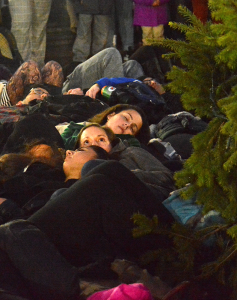
A group of students performed a die-in during the annual Christmas tree lighting ceremony in Dahlgren Quad.
The week culminated with a die-in at the annual Christmas tree lighting in Dahlgren Quadrangle on Dec. 5. The peaceful demonstration stood out to history professor Marcia Chatelain, who participated in university reflections throughout the year.
“There’s something really powerful about making contact with the ground and expressing your concern about the direction of the world that way,” Chatelain said. “Watching students literally put themselves on the line to make sure that the conversation on racial injustice continues is something about the school year that I’ll always remember.”
Admissions officer Aya Waller-Bey (COL ’14), former resident director of the Black House, echoed Chatelain.
“There was this silence, this eeriness for me,” Waller-Bey said. “It brought tears to my eyes.”
***
As discussion about national issues of race flourished, conversations about the state of Georgetown’s diversity inside and outside the classroom received greater attention as well.
“The problems about race and institutions not being as inclusive as they could be — those problems don’t only exist with regard to the police or to the justice system,” Butler said. “We need to turn the lens inward and look at our own institutions.”
These discussions about diversity in student life have taken place for years. Last year, as a senior, Waller-Bey spearheaded the #BBGU discussion, an online movement in which black students tweeted about their experiences at Georgetown. The daylong event in December 2013 translated into an action plan of eight points, including the institution of a diversity course requirement, which was presented to DeGioia at the annual Black House dinner in February 2014.
“These conversations aren’t that new,” Waller-Bey said. “For the greater America, this may not be on their radar, but this is our everyday experience, so … we are always organizing to have these conversations.”
Black House Resident Director Nancy Hinojos (SFS ’15) agreed that the conversations had been ongoing prior to this year but said that the national events brought greater attention to the issue on campus.
“We started to talk about what the dynamics were on campus and how that can be a microcosm of what’s going on in reality on a bigger scale,” Hinojos said. “I think there’s always been a conversation on diversity on campus and what it means for students of color to be Hoyas. So while that’s been happening, the national conversation has been happening at the same time. With that mix, it just became a stronger voice on campus.”
The conversations of those previous years seemed to begin to see results this year. The plan presented to DeGioia resulted in the formation of the Provost’s Committee on Diversity, announced Feb. 1 as a permanent committee of undergraduate and graduate students, faculty and administrators to advise Provost Robert Groves on diversity issues in the student experience.
“It has led the new effort around campus to celebrate heritage month celebrations, and it has been working very closely with Vice Provost [Randall] Bass on the proposal for a diversity requirement,” Office of the President Chief of Staff Joe Ferrara said in a statement to The Hoya.
Additionally, the Last Campaign for Academic Reform, officially launched in October, built upon 25 years of student advocacy in favor of a diversity course requirement, distributing a petition that garnered around 1,200 signatures. The Main Campus Executive Faculty will vote on whether to adopt the requirement Friday.
The requirement is an overlay, meaning students will not have any additional required courses but will instead have to focus two of their existing courses on issues of diversity.
Discussion of the experiences of communities of color on Georgetown’s campus particularly came to light in a town hall discussion after the publication of a cartoon in the Georgetown Voice, which advocates said highlighted the need for a diversity requirement. During the meeting, cartoonist Dylan Cutler (COL ’16) apologized for the depiction of Christopher Wadibia (COL ’16) and Meredith Cheney (COL ’16) as a dead horse. Students claimed the cartoon depicted both racial and gender-based violence.
“[Cutler] was very humble in coming up and saying, ‘Please engage with me on these issues,’” LCAR member Dan Zager (COL ’18) said. “That’s what I hope to come out of the diversity requirement: that people who have never talked about these issues that are very, very important engage in this conversation that everyone needs to be having.”
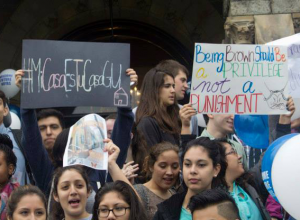
The Latino Leadership Forum and the Last Campaign for Academic Reform presented petitions in favor of Casa Latina and the diversity course requirement during an April sit-in at the president’s office in Healy Hall.
Linked with the diversity course requirement is the proposal for Casa Latina, a house for the Latino community modeled after the Black House. Currently, both black and Latino students share the Black House, which is overloaded with programming.
“I went to Georgetown on the premise that it is a Jesuit institution,” Latino Leadership Forum Facilitator Naomi Fierro (COL ’15) said. “It promised to take care of me in all of my forms. Not just because I got straight As, but because I’m Latina, because I bring something different to the table, because I’m a dancer. Those things make me different and make me beautiful and should not be shunned.”
Though a push for Casa Latina happened four years ago as well, conversations restarted in the fall among the LLF, culminating in the presentation of the petition for the house at a sit-in in the Office of the President April 10. The petition has 253 responses, 95 percent of which are in favor of the house. The sit-in also presented the LCAR petition for the diversity course requirement.
“People stood up spontaneously, talking about their experiences,” Zager said of the sit-in. “Being able to sit back and just let the community take charge and voice in the president’s office what they wanted to see done for a better Georgetown: that was beautiful.”
***
Conversations about Casa Latina and the diversity course requirement have taken place before, as have discussions about police brutality and the criminal justice system’s relationship with communities of color. In the past, though, they have receded into the background.
“August will come, and there’s a rush of activity,” O’Brien said. “We can’t forget that these conversations on race must continue.”
A consensus of student and faculty leaders, including Owolabi, Chatelain and O’Brien, highlighted institutionalizing the dialogue and preserving the memory of the history of student activism as the critical needs for the future of the conversation. In addition to the diversity course requirement, Owolabi called for the creation of an African-American studies major and other cultural studies programs.
“We need to have more places that reflect the beloved community that we want, more faculty and staff who are geared toward seeing the university as a place where this transformation happens,” Chatelain said.
One of those places that intends to engage wider portions of the university community is the recent “Ignite the Dream” summit. The first annual series, prompted by a call to action from sociology professor Michael Eric Dyson back in August at the reflections on Ferguson, took place April 9 to April 14, discussing issues of race, class and pervasive inequality in America and highlighting student activism.
“Our overarching goal was to attract people who aren’t engaged in the conversation,” Ignite the Dream co-founder Corey Stewart (SFS ’15) said.
“This year has been a lot, and I think it made people more aware, but issues of race and class are not just a conversation for that moment,” co-founder Bserat Ghebremicael (MSB ’17) said. “It’s a conversation that needs to continue and become ingrained.”
Although increased support from the administration and faculty created spaces for conversation this year, students still led the discussion and will likely do so moving forward. Students organized the Ferguson Week of Action, the town hall meeting following the Voice cartoon, the Last Campaign for Academic Reform, the push for Casa Latina and the Ignite the Dream summit.
“I’m just very proud of the type of engagement that our students had. It was meaningful, it was substantive and it was deep,” O’Brien said. “Jesuit education is about depth: depth of thinking, depth of questioning, depth of conversation. Those are harder conversations because they go deep and therefore they’re more personal. But the deeper the conversation is, the more lasting the impact is, and the more that all of us will change for the better as a result.”
***
After rising from the ground in front of the Christmas tree, the 75 or so people who had participated in the quiet protest at the lighting ceremony gathered in Red Square, where they had assembled four months earlier at the beginning of the year in grief and solidarity. Only around 40 people had entered Dahlgren Quad with the intention of protesting: the others had simply joined when they saw what was happening.
Stewart called the conversations over race and diversity that happened this year not adversarial or antagonistic but “empowering.” As the students stood together in a circle holding hands, the quiet feeling of solidarity and empowerment filled the air.
“In the circle, students of all backgrounds were standing united as Hoyas against police violence toward communities of color,” Owolabi said. “I will never forget looking around the circle and feeling as though I was not alone and had a community of support as we all struggled together for justice.”


